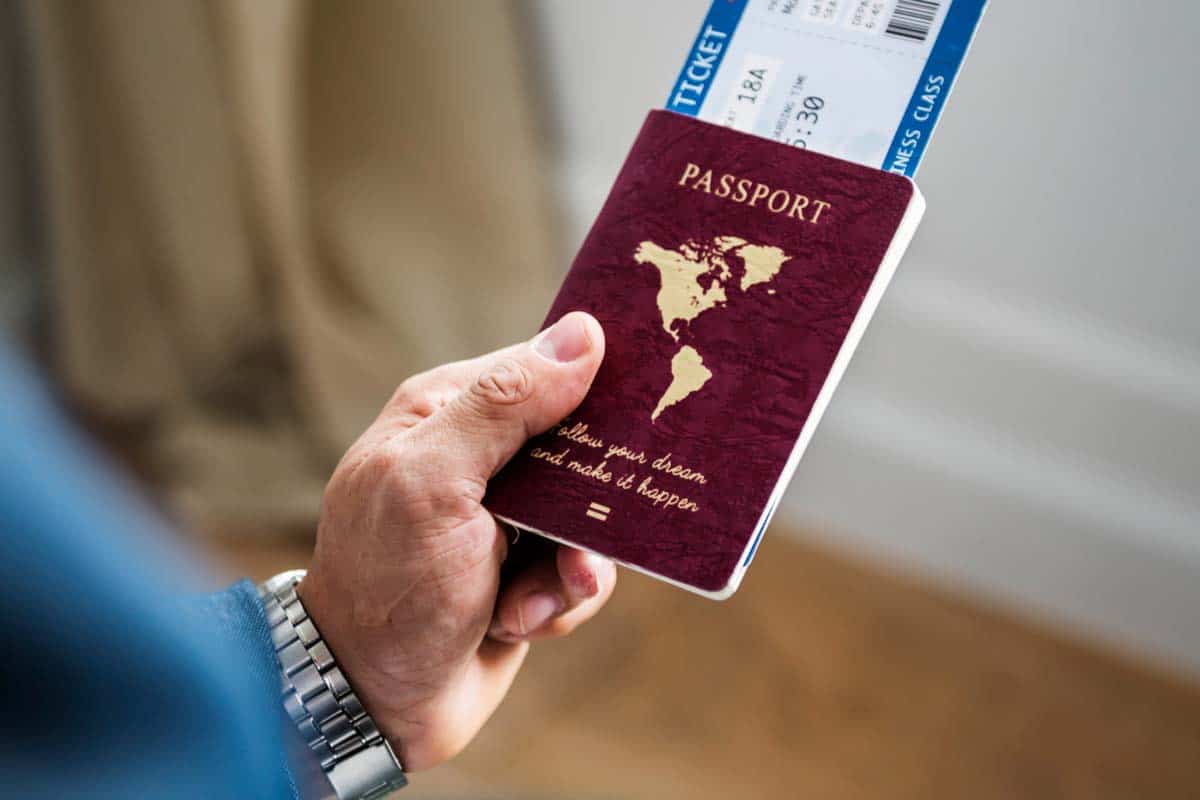Can you still visit Europe for $100 a day in 2024? Probably not anymore, but with a little planning and creativity, you can get close.
Of course, there are a few stipulations involved.
Visiting Europe for $100 a day
Travel Cost Assumptions
First, you don’t have to be a backpacker to do see Europe on the cheap. Second, you do not have to live in hostels. But with that being said, you need to understand that aren’t going to be staying in the 5 star luxury Hotel on the main square. You are going to need to be smart and a little bit mobile, and accept that there are going to be some trade-offs, like anything else in life. But it certainly can be done, and really no less enjoyable.
With that said, you do need to travel in pairs, in order to take advantage of room rates. Solo travelers don’t get a break typically. So as I write this, I am operating under the assumption that there are two people sharing that nightly rate. Or in other words, our budget is $100 per person per day, for the sake of this discussion.


Lastly, this very limited budget does not include any flights getting to and from Europe. I’m assuming you have points or maybe you were planning to be there already.
Trip planning is the key to managing travel cost
Once you have determined where you want to travel, how and when you plan to get there and where you will stay, then you are pretty much committed and your ability to cut costs will be limited. So really the key is planning the trip out in advance, or at least the major components.
Overnight travel – sleep while moving
Travel at Night. Identify overnight travel opportunities to save on hotel nights and/or intercity travel. Think rail and sail (e.g., trains and ferries). You have to pay to sleep someplace and you have to pay to travel from point A to point B. Combine those two when it makes sense. In fact, I recommending planning your trip around this. You might find that overnight train tickets are not all that much more expensive than a hotel, if you purchase them in advance.

If you are wanting to visit any of those major capital cities in Western Europe, those hotel nights can add up real quick. So take an overnight train from one of your plan destination cities to another. This is a simple way to offset one or two nights of hotel expense.
Rail is often similar to airfare in terms of cost, but you don’t have to deal with airports – plus your train station is going to be right in the center of your destination city so you aren’t spending time and treasure in getting yourself and your bags out to the airport.
And I found that a train trip is a fun way to see Europe. Some of the best shopping and memorable cafes we’ve been to were within 50 meters of a major train station, if not actually IN the station itself. They are massive, grand affairs, and honestly worth exploring on their own merit. Seriously, having seen these train stations in in several major European cities, I consider this part of the tour!
And as for ferries, these ships are much nicer than what many readers might expect. I would say these are ‘cruise-ship lite’ experiences, or at least that was my own personal impression. Passengers book a cabin, and there are plenty of dining options onboard.


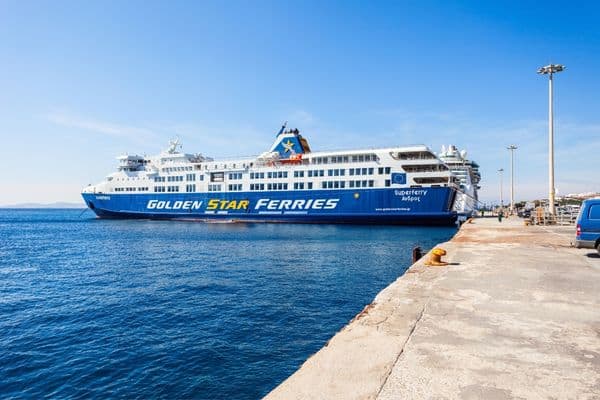
Now, you might not achieve the savings that would by taking an overnight train, but you do get a good night’s rest, you’ll have an amazing experience (the plan is to go on vacation, right?) and you still achieve the goal travelling while sleeping comfortably.
We recommend Directferres.com as a comprehensive and reliable recourse for researching and booking ferry trips in Europe.
Avoid peak season
Obviously you can only travel when you have the time and opportunity to do so. But do some research, and be aware of major seasons. May and September are peak months in Europe, even more expensive than the summer months for certain types of travel, so consider going in April or October, or even some of the offseason months if that makes sense.
And be aware of local seasonality factors when tourists tend to flock in droves to certain destinations. Going to Amsterdam in April during peak tulip season is going to cost a bit more – can you go earlier or later? At least compare hotel costs, and maybe be prepared to look for deals a little outside the center. Or potentially you can plan your hotel nights during the week and score some savings (avoiding weekend rates).
Include cheaper destinations in your trip
This topic is a tough one because you want to go where you want to go, and you don’t want to go elsewhere just to save a buck. It’s your trip, go where you want. But just like with the seasonality aspect, you should be aware that the cost of visiting London is not the same as visiting, say, Prague or Lisbon or some small coastal town somewhere.
So sure, hit the main city or cities on your travel bucket list, but if you do have time left in your planned journey and haven’t yet determined where you want to explore, consider some fun possibilities where you can stretch a buck.
Think smaller to medium size cities, or islands with ferry service. Think Portugal, Spain or the south of France (or even Morocco), or just about anywhere in Italy in southern Europe. You might be interested in visiting Corsica in France, or the Balearic islands in Spain, or tacking on that side trip to Sicily in Italy.
Or go East. See Prague, or Budapest or the Dalmatian coast in Croatia. Really anyplace along the Adriatic sea is going to be intriguing, with some cost effective options to visit some places that you might not have otherwise considered such as Albania or Montenegro, or even Corfu in Greece.
The Baltic States, Estonia, Latvia and Lithuania, are wonderful places to visit. Riga and Tallinn are both great destinations and easy enough to get to, particularly if you are already planning to be in Scandinavia or Northern Europe.
Cost Effective Accommodations in Europe
There is no shortage of decent, reasonably priced budget hotels, which are clean and safe and offer value. These are not hostels, with shared living spaces and bathroom facilities. These are your standard garden-variety 3 star hotels with a very basic breakfast.
Now there won’t be any amazing views of any major landmarks or skylines or anything like this. You very well might get a stunning view of a building (under reconstruction) right next door, or some parking lot. But you didn’t fly all the way to Europe to look out your hotel window – you went there to go out and explore, up close and personal.
Find hotels on the fringes
When I was booking trips for clients in Europe, I would look for 3 or 4 stars, and something close to the central ‘downtown’ area or the old city or whatever, but probably not right on the main square. And I would always go for a reliable European hotel chain brand, something that would be fairly predictable in terms of quality.
We weren’t looking for a resort with a view, just something that allowed them to wake up, have breakfast and walk right out the front doors and feel like they are in Europe and within striking distance of whatever there is to see and do in that destination city. The hotel stay is not meant to be a mainstay of the trip experience, but it should facilitate the trip experience, and certainly not impede it.
Ok now if we are going budget we can still take this approach and make it work, but we are probably going to need to plan on a hotel location that is maybe a bit further away from that main square that we keep referring to – we want to find a place that is within walking distance of a subway station or a train station, which would allow the traveler easy access to public transportation.

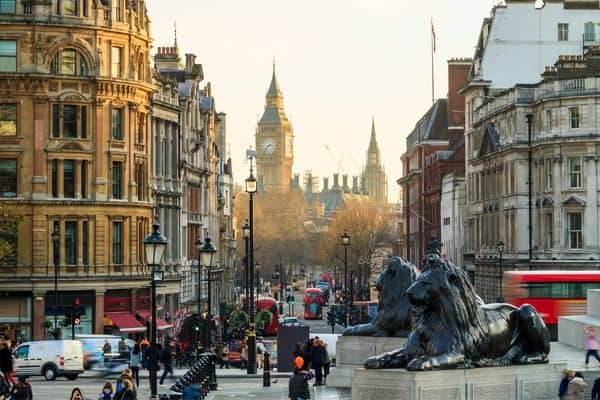

Objectively speaking, if you are visiting London or Paris, then realistically you aren’t going to cover it all on foot and still hit everything you want to see – you are going to need to get around the city, and at least get yourself close, within walking distance, before venturing out on foot to take in the sights.
And so, really no matter where you stay in either city, you are not going to be close to everything there is to see, and so you are going to be taking advantage of ground transportation regardless. Why pay $500 a night for a hotel room 2 blocks from Big Ben or the Eiffel Tower, in that case? Just go stay someplace with easy access to a subway line for a fraction of the cost.
OK in a place like Amsterdam, you might be boarding a river cruise and staying adjacent to the main train station and river port could be an obvious advantage, if your budget allows – but for our purposes, in this article, that our budget does not, so let’s make sure we find a reasonable place, on a subline that runs right where we need it to go – and those can be found.
Some of the primary hotel chains in Europe, at least in western Europe, that I would typically look for are the Accor brands, Ibis, Mercury, Intercontinental (IHG), Melia and NH Hotels, among others.
Rent a flat for longer stays
This is probably an obvious suggestion, but if you don’t plan to travel between cities, then you might consider a longer stay option, something that rents by the week. Or book an ‘apart-hotel’ vs a standard hotel, something with a bit more space, and a small kitchen just to help cut costs. You don’t even have to go to specialized booking sites online, these can be booked right on standard booking sites that you already use to search for hotel deals, like Agoda.com.
We recommend Agoda Apartments – just go to the home page at and clink on the Apartments link at the top of the page:
The flat or the apart hotel offers some cost saving advantages on top of just the lower nightly rate. Fill up on breakfast and use the kitchen for something simple, something with some local flavor, in the evenings. The idea here is to eat for less during the day, while you are out exploring, and then leverage the kitchenette to really save on breakfast and evening meals.
Again, the trick here is going to be getting something in a decent location – on the fringes but close to a local train line or subway stop. And some local food shops or markets will be a major advantage, as well as maybe some local pubs or eateries that locals frequent (less expensive and more authentic).
Cut costs on meals
We are operating on the assumption that we plan on having three meals a day. Not much fun seeing the world if you are starving yourself the whole time you are there. Our three meals run in order of cost, generally, starting with least costly first at breakfast, then lunch, and the most cost being incurred for the evening meal.
Find those lunch specials during the day
Breakfast should be addressed when booking your accommodations. Either fill up with the breakfast options the hotel gives you or shop for some cost effective provisions to keep in your flat or apart-hotel.
Lunch is going to be on the fly, somewhere out in the area where you are exploring.



My strategy is to keep an eye out for low cost options that are popular with the locals – a curry joint in London or some middle eastern kabobs in Paris, you see them all over, and they can be quite enjoyable and cost effective.
Find some set menu offers, or some other form of lunch specials that check the box for you. Fill up for lunch, but find a deal.
Now let’s skip to the evening meal, as this is where we need to save some funds. We aren’t going to be enjoying too many lavish meals on our budget so we need to be on the look out for some basic low cost ‘mom and pop’ local neighborhood café options, most likely someplace out on the fringes (close to your home away from home) that is going to away from all the tourists and main attractions. Ask the locals where they go – some of my favorite places in Moscow are spots the locals put me onto.
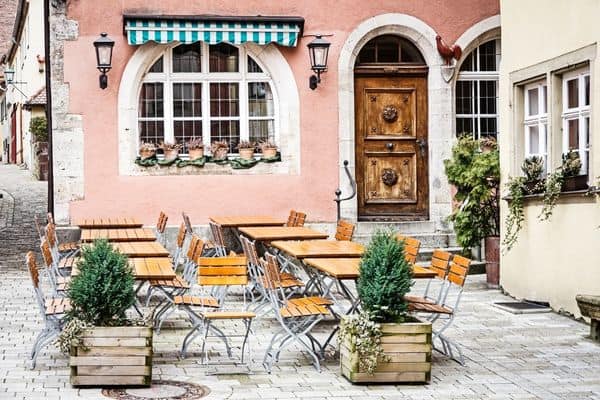


In fact, for at least a few of these evenings, we probably are going to be waiting on ourselves – think ‘take away’ orders, sandwiches, or something from a local market or food store might pair nice with some store bought local beer or wine. Plan on some picnic style low-cost evenings, if you are committed to staying within budget.
Be smart with beverages
Find a market or a store, and buy your water, beer, wine, coffee, whatever you plan to consume for the time you are there in that city or destination. Drink plenty of water, and find places to fill up your water bottles for free whenever you can. Rely on your hotel or apartment for coffee and tea. Sorry no Starbucks for you.
If your travel plans include some club scenes or some form of night life activity, do as much ‘pre-game preparation’ beforehand as possible, to offset some of the cost of paying for drinks.
Getting around for less
Be prepared to walk, but be smart about it. You cannot walk everywhere, and you need to conserve your energy and still make the experience enjoyable as well.
Use public transportation
The alternative is to dive into a taxi or a shared ride somewhere. You want to avoid those taxi rides if you are on a tight budget. Get comfortable with the local subway or rail system, if there is one. Trolleys and busses work well also, depending on your destination. This is a natural extension of walking and seeing the sights on foot.
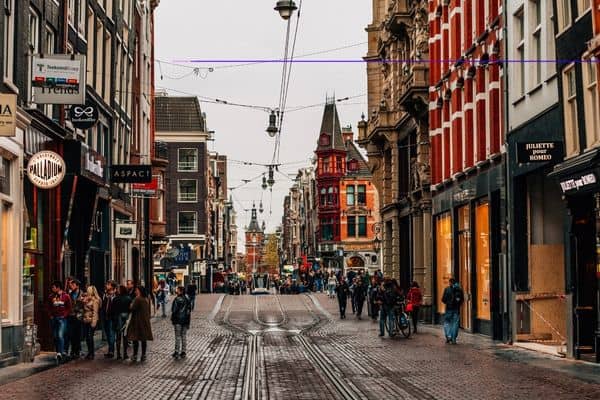


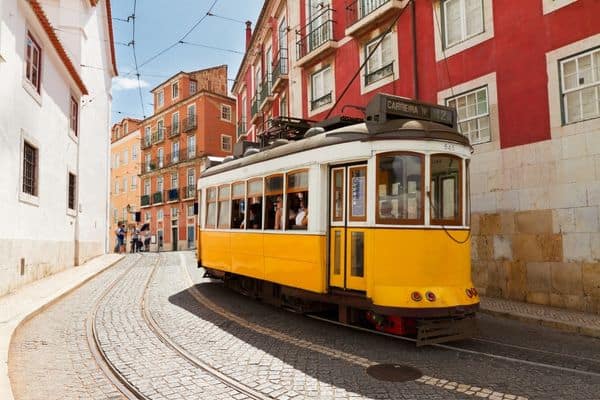
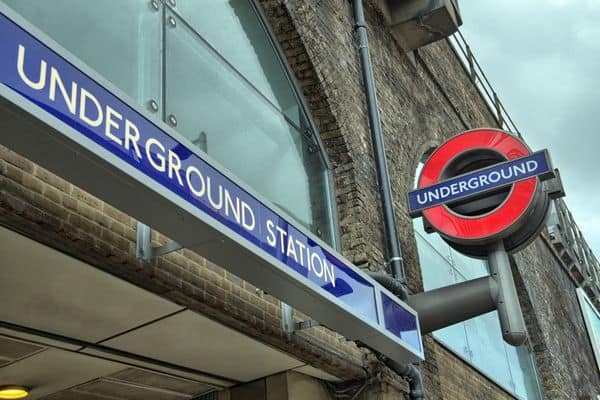
In Europe, it won’t feel strange or out of place at all. You might find that you look forward to some of those tram rides or subway rides, just to take a load off your feet for a bit while out exploring.
Instead of piling into that car or cab to go to the airport to train station, can you roll yourself and your suitcase onto an express train or subway? It makes it easier if you plan for it in advance – is your hotel close to the train stop, or even near the train station? Playing an extra $5 a night is probably worth it, if it saves you a $40 cab ride and allows you some extra convenience in getting around.
Depending your location, you might consider renting some bikes – obviously, the pedal variety will be the most cost effective option – something that will allow you to cover a little more ground and see/photograph more sights during the day.
Travel light
Ok we have already alluded to this, but if you are going to be on foot a lot and using trains, subways and various other forms of transportation, then you won’t want to wear yourself out. You want suitcases that roll on wheels, and you want to try your hardest to pack everything you need into that, and maybe a small bookbag or backpack (something you can carry easily).
Find free activities
You aren’t going to have a lot of extra budget to pay for entertainment or activities, so plan on doing a lot of sightseeing. Pull out those high pixel phone cameras to photograph and document your journey. Research free and low cost activities in advance – you might be surprised what you can do for very little cash out of pocket!
If you do decide to book some tickets, get them in advance and see if there are any package deals. And understand the different options – visiting the Eiffel tower is relatively inexpensive, as I recall, if you don’t go all the way to the top, but still worth doing. Again, there are going to be some tradeoffs here.
Buy local tickets in advance
We learned this one the hard way – any train tickets, ferry tickets or tickets to anything you definately want to see and do, you want to get them beforehand. First you save on the ticket cost, but also things do sell out.
Very often we find that booking the tickets in advance saves on cost of the tickets, but it also helps for planning and budgeting purposes. We recommend Getyourguide.com for this; if nothing else you get a good feel for what is there to see and do during your visit.
Visit Europe for $100 a Day – Is it Realistic?
In conclusion I would say that in 2023 it is probably not realistic to do this on $100 day. Inflation over the last year or so, since the pandemic and return to travel, has pushed food prices and hotel prices upward just a enough so that this is really no longer possible.
You could, however, still probably manage at $120 per day, per person.
Limit the cost of the hotel / apartment accommodations to no more than 50% of the travel budget. In fact, try get it down into that 40-45% range, if possible. Or in other words, can you manage to keep your accommodations in that $90 to $100 per night range (again, this is for two travelers). This is going to leave you with a little more flexibility on food options (particularly in the evenings) and maybe some low cost entertainment.
Recent Posts
Here are seven great hotels in Helsinki for train travelers. All seven hotels are located near the train station in Helsinki, making them all convenient travel options that will be hard to beat...
Train Trips from Venice: Exploring Italy by Rail Italy is a country of breathtaking landscapes, rich history, and vibrant culture, and there's no better way to explore its treasures than by train....
